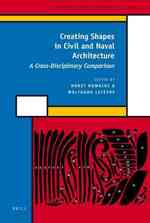- ホーム
- > 洋書
- > 英文書
- > Philosophy
基本説明
Examines the ways in which individuals' bodies, habits, environments, and abilities function as horizons that underpin their understandings of the ordinary. This book is an impressive phenomenological, feminist reading of the complexities of human experience.
Full Description
If social, political, and material transformation is to have a lasting impact on individuals and society, it must be integrated within ordinary experience. Refiguring the Ordinary examines the ways in which individuals' bodies, habits, environments, and abilities function as horizons that underpin their understandings of the ordinary. These features of experience, according to Gail Weiss, are never neutral, but are always affected by gender, race, social class, ethnicity, nationality, and perceptions of bodily normality. While no two people will experience the ordinary in exactly the same way, the multiplicities, possibilities, overlaps, and limitations of day-to-day horizons are always intersubjectively constituted. Weiss turns her attention to changing the conditions and experiences of oppression from ordinary to extraordinary. This book is an impressive phenomenological, feminist reading of the complexities of human experience.M. V. Marder, University of Toronto, Feb. 2009
Contents
Contents
Acknowledgments
Introduction
Part 1. Figuring the Ground
1. Context and Perspective
2. Ambiguity, Absurdity, and Reversibility: Three Responses to Indeterminacy
Part 2. Narrative Horizons
3. Reading/Writing between the Lines
4. The Body as a Narrative Horizon
Part 3. (Re)Grounding the Figure
5. Can an Old Dog Learn New Tricks? Habitual Horizons in James, Bourdieu, and Merleau-Ponty
6. Imagining the Horizon
Part 4. Urban Perspectives
7. City Limits
8. Urban Flesh
Part 5. Constraining Horizons
9. Death and the Other: Rethinking Authenticity
10. Challenging Choices
11. Mothers/Intellectuals: Alterities of a Dual Identity
Notes
Bibliography
Index








